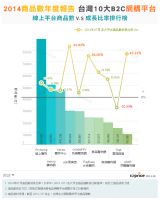search:account payable turnover相關網頁資料
account payable turnover的相關文章
account payable turnover的相關公司資訊
account payable turnover的相關商品
瀏覽:1373
日期:2024-07-11
Accounts Payable Turnover Ratio | Calculation | Formula | Example ... Accounts payable turnover is a ratio that measures the speed with which a company pays its suppliers. If the turnover ratio declines from one period to the next, this indicates that the...
瀏覽:1384
日期:2024-07-15
The accounts payable turnover ratio, or simply the payable turnover, is a liquidity ratio that shows a company's ability to pay off its accounts payable by comparing net credit purchases to the average accounts payable during a period....
瀏覽:1297
日期:2024-07-18
Accounts payable refers to the outstanding amount a business owes its suppliers for goods purchased. Accounts-payable turnover calculates the average time it takes the business to pay its suppliers for goods that were purchased. Accounts-payable turnover ...
瀏覽:1310
日期:2024-07-16
A company's accounts payable turnover ratio offers a glimpse of its liquidity. A simple formula is used to determine the rate at which the company is paying off its debt obligations to suppliers. This ratio impacts managerial decisions, supplier credit te...
瀏覽:1340
日期:2024-07-18
Definition of accounts payable turnover: The average duration an item remains in accounts payable, equal to total purchases divided by average accounts... Home Articles Tips Videos Browse by Subject Term of the Day InvestorWords.com - Online Investing Glo...
Accounts payable turnover ratio - formula, example, interpretation | Explanation | Accounting For Ma
瀏覽:1282
日期:2024-07-13
Accounts payable turnover ratios or creditors turnover ratio explanation, formula, computation, example and interpretation. ... Accounts payable turnover ratio (also known as creditors turnover ratio or creditors’ velocity) is computed by dividing the net...
瀏覽:928
日期:2024-07-12
The accounts payable turnover ratio indicates how many times a company pays off its suppliers during an accounting period. It measures how a company manages paying its own bills. ... See Also: Accounts Receivable Turnover Days Payable Outstanding...
瀏覽:809
日期:2024-07-12
23 Jul 2013 ... The accounts payable turnover ratio indicates how many times a company pays
off its suppliers during ......








































